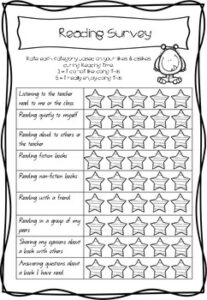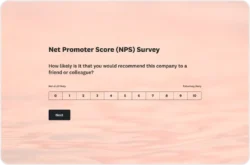Have you ever wondered what truly drives customer loyalty or dissatisfaction? The Net Promoter Score NPS is a fantastic starting point, giving you a quick snapshot of how likely your customers are to recommend your product or service. But let’s be honest, a number alone, whether it is a 9 or a 3, only tells half the story. It is like seeing a movie score without reading any reviews. You know if people liked it, but you have no idea why or what to expect.
That is where the magic of a good nps survey template with comment sections comes in. By providing an open field for customers to elaborate on their score, you unlock a treasure trove of qualitative data. These comments are the “why” behind the “what,” offering invaluable context that a simple numerical rating can never provide. They paint a vivid picture of customer experiences, highlighting specific pain points, delightful surprises, and areas ripe for improvement. Without these insights, you might find yourself guessing at solutions, which can be a costly and inefficient way to enhance customer satisfaction.
Why Adding a Comment Section Transforms Your NPS Data
Relying solely on a numerical NPS score is like trying to navigate a complex city with only a single landmark. You know where you are, but not how to get anywhere else or why you are there in the first place. Customer comments, however, act as your detailed map and travel guide. They reveal the specific aspects of your product, service, or interaction that led to a particular score. Was it the incredibly helpful support agent? Or perhaps a frustrating bug in your app that spoiled an otherwise good experience? The comment section is where customers spill the beans.
This qualitative feedback bridges the gap between a superficial number and actionable intelligence. For instance, a detractor who scores you a 0 might simply be having a bad day, or they might have encountered a critical bug that is affecting thousands of users. Without their comment, you would never know the difference, nor would you be able to prioritize fixes effectively. Similarly, a promoter giving a 10 could mention an unexpected feature they loved, providing you with valuable insights for future development or marketing efforts.
Understanding the “Why” Behind the Numbers
Delving into these comments helps you understand the underlying sentiment and specific experiences of your customers. It allows you to move beyond averages and identify recurring themes, emerging trends, and even individual customer issues that require immediate attention. This deeper understanding is crucial for making informed business decisions, whether it is about product development, customer service training, or refining your overall brand messaging. Each comment is a direct piece of feedback from someone who matters most your customer.
The practical benefits of incorporating a comment section are immense. It helps your team members across different departments gain a more granular view of customer sentiment. Sales teams can understand what excites prospects, product teams can pinpoint areas for improvement, and marketing teams can discover compelling customer testimonials. Essentially, comments turn data into stories, making it easier for everyone in your organization to empathize with and respond to customer needs.
Some specific advantages of including a comment field are:
- Contextualize scores: Understand the specific reasons behind high or low scores.
- Identify specific pain points: Pinpoint exact issues that frustrate customers.
- Uncover unexpected delights: Discover what truly excites and satisfies your users.
- Facilitate targeted follow-ups: Provide specific information for customer success teams to address.
- Prioritize improvements: Allocate resources to fix the most impactful issues.
Crafting the Perfect NPS Survey Template With Comment Sections
When designing an NPS survey template with comment fields, simplicity and clarity are paramount. You want to make it as easy as possible for your customers to provide feedback, without making the process feel like a chore. The main NPS question “On a scale of 0 to 10, how likely are you to recommend [Company/Product/Service] to a friend or colleague?” should be followed immediately by an open-ended question. This question should encourage elaboration without being too leading.
A common follow-up question is “What was the primary reason for your score?” or “Please tell us why you gave us this score.” For promoters, you might ask “What did you like most about your experience?” For detractors, “What could we do to improve your experience?” Tailoring the follow-up question based on the score can significantly increase the relevance and depth of the comments you receive. Remember, the goal is to gently guide them towards providing actionable insights, not just venting.
Consider the user experience when implementing your survey. Is it mobile-friendly? Is the comment box large enough for detailed responses? Do you provide an optional field for contact information if the customer is willing to be followed up with? These small details can have a big impact on response rates and the quality of feedback. An intuitive and unobtrusive survey design encourages more honest and comprehensive input from your customers.
Once you have collected the data, the real work begins. It is not enough to just collect comments; you need to analyze them systematically. Tools for sentiment analysis, keyword extraction, and theme categorization can help you make sense of large volumes of qualitative data. Look for recurring patterns, emerging issues, and strong positive or negative sentiments. This analysis will help you identify overarching trends that inform strategic business decisions and operational improvements.
To ensure you get the best out of your template:
- Keep the survey brief: Respect your customers’ time.
- Use clear, concise language: Avoid jargon or complex phrasing.
- Provide an ample comment box: Give space for detailed responses.
- Consider conditional follow-up questions: Tailor based on the initial score.
- Assure anonymity: Many customers are more open when they know their feedback is private.
Ultimately, understanding your customer is the bedrock of sustained growth and success. While an NPS score offers a quantitative snapshot, it is the rich, narrative feedback from comment sections that truly brings the customer voice to life. By thoughtfully integrating these qualitative insights, you transform raw data into a powerful roadmap for improvement, enabling you to build stronger relationships and create experiences that genuinely resonate.
Embracing this holistic approach to customer feedback empowers your business to not only react to issues but to proactively anticipate needs and delight your audience in unexpected ways. It moves you beyond mere measurement to true customer-centricity, ensuring your strategies are always aligned with what your most important asset your customers truly desire.



